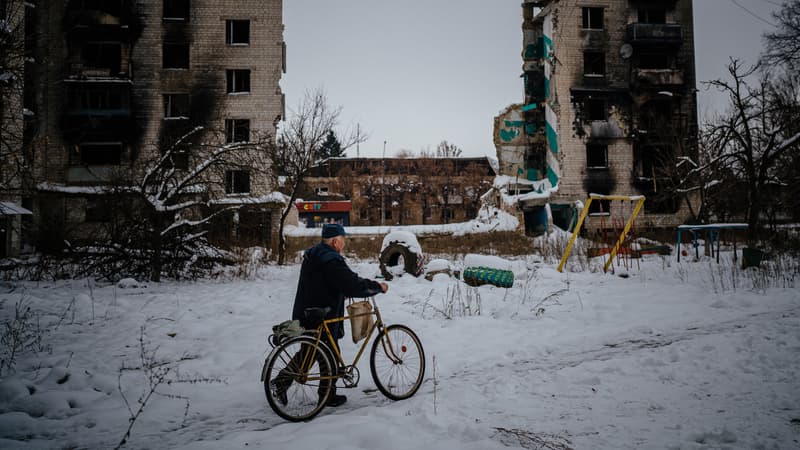6°C in Kyiv this Friday, the sun sets around 4 pm… Winter in Ukraine is usually harsh, but this year it takes on a new dimension. Since October and a series of military setbacks on the front lines, Russia has adopted the tactic of attacking Ukrainian power plants and transformers with its missiles and drones, regularly plunging the population into cold and darkness in the dead of winter.
“Most regions” of Ukraine were thus affected Thursday night by power cuts after the new barrage of Russian fire that attacked the country’s electrical infrastructure in the morning, lamented its president, Volodymyr Zelensky.
“It is especially difficult in the kyiv region and in the capital itself, in the Lviv region, in Odessa, Kherson and surroundings, in Vinnytsia and Transcarpathia,” he said in his daily intervention on social networks.
Lviv, the big city in western Ukraine, was 90% without power on Thursday after the strikes, according to its mayor, Andriï Sadovy.
Winter clothes for Ukrainians.
To deal with these difficulties, Western aid to Ukraine is not limited to weapons and military equipment. NATO has thus provided “winter clothing” to the country, according to a press release dated December 21 that does not quantify this aid.
The United Kingdom announced for its part, on December 10, that it had provided 7,000 “normal cold kits” and 25,000 “extreme cold kits” to Ukrainian soldiers.
In a video uploaded to Twitter by the Ministry of Defense, a British soldier details the contents of these kits: they include boots, socks or underwear.
Displaced people particularly at risk
The cold is particularly dangerous for displaced people, according to Unicef and the NGO International Rescue Committee (IRC). In a speech before the UN Security Council on December 6, the UN Secretary General for Humanitarian Affairs, Martin Griffiths, estimates that 6.5 million Ukrainians are déplacés à l’intérieur du pays à cause War.
These people “were forced to quickly leave their homes, many of them taking only what they could wear or put in a car” and, therefore, no “cold clothes or blankets,” the IRC stresses on its site.
These Ukrainians “take refuge where they can, often in buildings not suitable for temperatures below zero,” adds the NGO.
Psychosocial risks
The elderly are also vulnerable to cold and lack of electricity, according to the IRC. “Generally less mobile” and in the face of a conflict that disrupts the surrounding community, “they often lose access to the daily services on which they depend for food and care,” laments the NGO.
“With limited electricity and communication services, it is also more difficult for families to take care of their parents and grandparents,” he adds.
Unicef claims to have distributed more than $20 million in winter supplies (clothes, generators, water heaters, etc.). But the UN agency stressed in a press release published on December 14 that “a bleak winter is also likely to worsen the psychosocial situation of children, who are already facing an impending mental health crisis.”
Unicef estimates that “1.5 million of them are at risk of depression, anxiety, post-traumatic stress disorder and other mental disorders.”
Source: BFM TV


